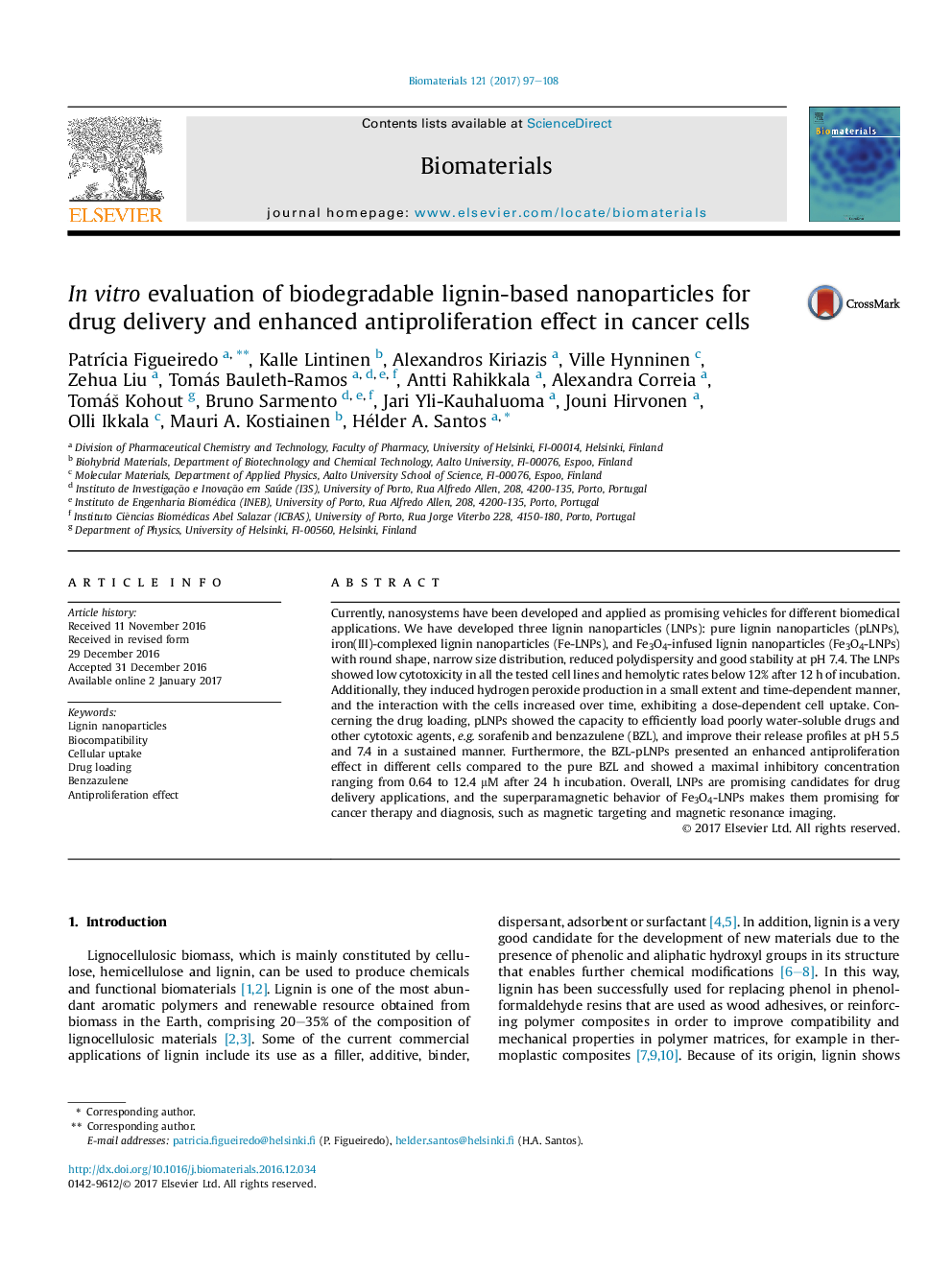| Article ID | Journal | Published Year | Pages | File Type |
|---|---|---|---|---|
| 6450782 | Biomaterials | 2017 | 12 Pages |
Currently, nanosystems have been developed and applied as promising vehicles for different biomedical applications. We have developed three lignin nanoparticles (LNPs): pure lignin nanoparticles (pLNPs), iron(III)-complexed lignin nanoparticles (Fe-LNPs), and Fe3O4-infused lignin nanoparticles (Fe3O4-LNPs) with round shape, narrow size distribution, reduced polydispersity and good stability at pH 7.4. The LNPs showed low cytotoxicity in all the tested cell lines and hemolytic rates below 12% after 12 h of incubation. Additionally, they induced hydrogen peroxide production in a small extent and time-dependent manner, and the interaction with the cells increased over time, exhibiting a dose-dependent cell uptake. Concerning the drug loading, pLNPs showed the capacity to efficiently load poorly water-soluble drugs and other cytotoxic agents, e.g. sorafenib and benzazulene (BZL), and improve their release profiles at pH 5.5 and 7.4 in a sustained manner. Furthermore, the BZL-pLNPs presented an enhanced antiproliferation effect in different cells compared to the pure BZL and showed a maximal inhibitory concentration ranging from 0.64 to 12.4 μM after 24 h incubation. Overall, LNPs are promising candidates for drug delivery applications, and the superparamagnetic behavior of Fe3O4-LNPs makes them promising for cancer therapy and diagnosis, such as magnetic targeting and magnetic resonance imaging.
